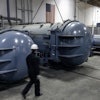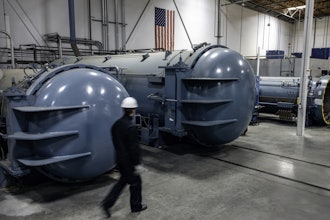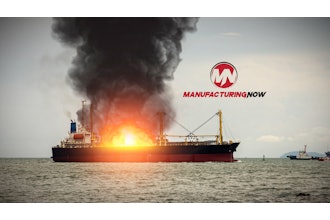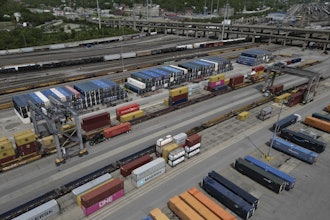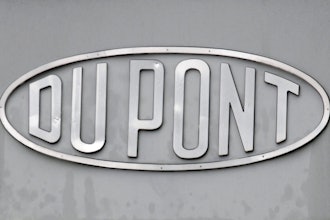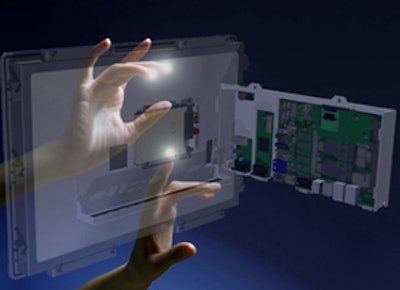
HMI or Human Machine Interface – everybody has them. From physical pushbutton stations to sophisticated graphical interfaces with 3D representations of equipment – HMIs are the visible part of a controls and/or manufacturing intelligence system. Unlike controller code that is seen by few, anyone and everyone can see the HMI. As the manufacturing industry moves rapidly into the virtual, paperless era, the standardized working environment for managing manufacturing operations require tools like HMI 3D visuals and flat screen monitors in control rooms and at strategic points throughout the facility. It is becoming the norm, not the exception.
What defines standardization as it applies to HMI systems? Standardization involves graphic standards, naming conventions, and application design concepts ― a consistent look and feel to promote greater efficiency on the plant floor. It is the best practice of applying easily recognized visuals to increase the productivity at the point of use. As standards become applied on an Enterprise scale, overall benefits multiply.
The Three Most Important Benefits of Standardized Human Machine Interface (HMI)
- Increase in productivity - The ease of use and functionality of HMI systems will increase your OEE and workforce productivity. The updated control system makes it easier to start, stop, troubleshoot and make changes in production.
- Easy to understand technology – In addition to increased productivity for operators, other tasks improve as well. Training, troubleshooting and line changes are simplified. A trained line operator can walk up to the HMI at any time and easily understand what is going on in a particular stage of production. Applied programming standards make it easy for users to dig deeper into the controls through the HMI to receive more information about a situation.
- Cost Efficiency - The return on investment for HMI standardization is quickly recaptured through the efficiency it brings to operations through reduced downtime for equipment issue resolution and changes, and increased productivity by operators, maintenance and engineering.
Graphic standards - It’s important to focus on an efficient design that functions well and looks good. Polytron, a member of the Control System Integrators Association (CSIA), upholds a high graphics standard among nearly any combination of hardware and software. Flashy animations and software might look impressive in an HMI demonstration, but doesn’t contribute to the HMI’s effectiveness ― in fact it slows down the operator’s navigation to devices and information.
At the system and machine level, HMI design consistency promotes user confidence with regard to expectations on how the interface operates. For example, a button that takes you back to the main menu should be placed in the same location every time it is used. If the location varies from screen to screen, confusion and inefficiency prevail. In addition, if controls for seldom-accessed devices work in the same way as frequently-accessed devices, then the user can interact with those devices just as easily and with the same level of confidence.
At the site level, users who move between manufacturing systems in the same facility understand how controls work regardless of assignment. Consistent HMI controls benefit operational performance by allowing line personnel to efficiently work on multiple systems more seamlessly. In addition, maintenance and engineering benefits from consistent troubleshooting capabilities across the facility. For example, a motor fault on Line A is reported and reset exactly the same way as on Line B. Additionally, consistent HMI systems reduce line training efforts for both students and trainers.
Programming standards - The ability to achieve the same look and feel across platforms isn’t a luxury, it’s an operating necessity. The HMI platforms we program are often driven by our clients because of currently installed systems. Examples of HMI platform products include; Wonderware® InTouch®, and Rockwell Automation’s FactoryTalk View®. Polytron is certified in both of the platforms.
Standardization translates into sustainable efficiency with regards to development. The platform provider tends to have well-defined and more rigid HMI standards in order to minimize their costs, while some System Integrators also have well-defined HMI standards with more flexibility to accommodate their customer’s requirements. It is possible to blend flexibility and standardization with an 80-20 approach ― a standard that accommodates 80% of provider standards with 20% for project-specific requirements. Applying standards at the proper level of granularity is vital to this approach. In addition, proven standards can be deployed across different software platforms for maximum flexibility.
Since the HMI and controller devices work closely together, HMI standards advance additional efficiencies through controller programming standards. Consistency on the graphic and logic sides further reduces effort and provides more time for the 20% project-specific requirements. This leads to enhanced code reusability which significantly reduces application development effort. In the same way that standards help the customer to leverage consistent experience in the enterprise, standards also help developers to “not reinvent the wheel” and apply industry expertise effectively.
Beyond application development, standards facilitate documentation and training. Standard documentation and training materials can be developed for the 80%, forming a module – complete with graphics, controller code, documentation, and training materials. These modules can form the basis for a comprehensive application development library.
HMI 3D software option - A top-down view of a production line is typical in a HMI. However, when the line contains a spiral or multi-level conveyor, a top-down view will significantly diminish the power of the HMI for appropriate line management. So, as an HMI 3D expert, Polytron builds a 3D model to view the line from the side, at different angles and levels, with the ability to zoom in at any point. This provides operators and technicians the ability to clearly see what is happening on the entire line from the perspectives they need to make better decisions and changes.
One of the biggest benefits of HMI standardization is realized at the enterprise level. Users who move between sites know how to operate and troubleshoot more efficiently. Training and documentation become even more efficient at the enterprise level. And, from a development perspective, those with the proven best practices can leverage solutions across the enterprise. For example, Plant A may have more experience on process, while Plant B has more experience on packaging. Plant A can leverage process solutions for both sites while Plant B leverages packaging solutions. Standardization allows all plants to share solutions and maximize the capability and efficiencies across the manufacturing enterprise. Think about how you interact with the ATM at your bank. If it is different from branch to branch, you need to re-learn for each ATM visit. If standardized, you can make your transactions quicker and easier no matter which banking branch you visit.
Polytron is a leader in manufacturing automation and manufacturing process design. Based in Duluth, Georgia, Polytron has been helping customers engineer and operate with manufacturing excellence since 1983. Polytron applies project management and engineering expertise in hundreds of engagements with many of the world's largest companies, including the food and beverage, pharmaceutical, and consumer goods. Learn more at www.polytron.com.
The Control System Integrators Association (CSIA) is a global non-profit professional association that seeks to advance the industry of control system integration for the success of members and their clients. For more information, visit www.controlsys.org.


